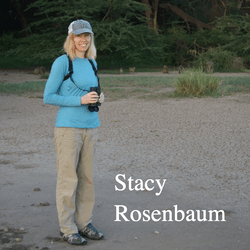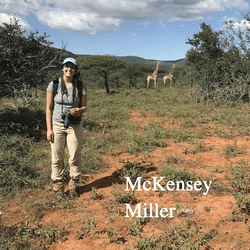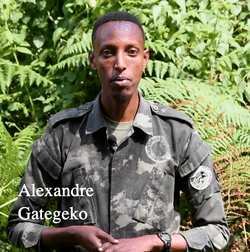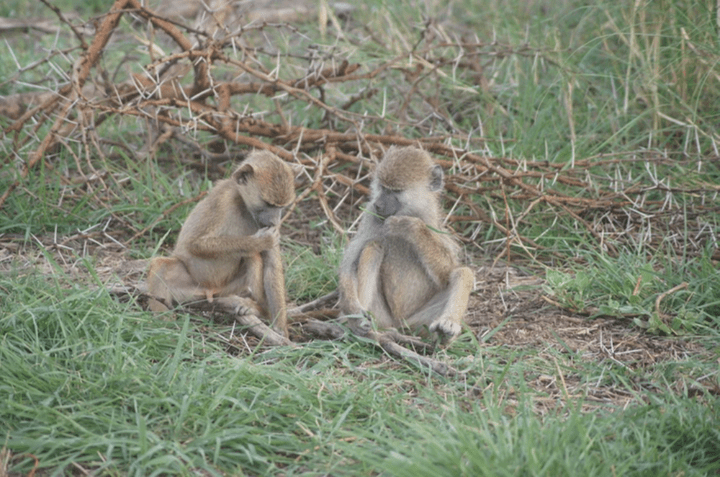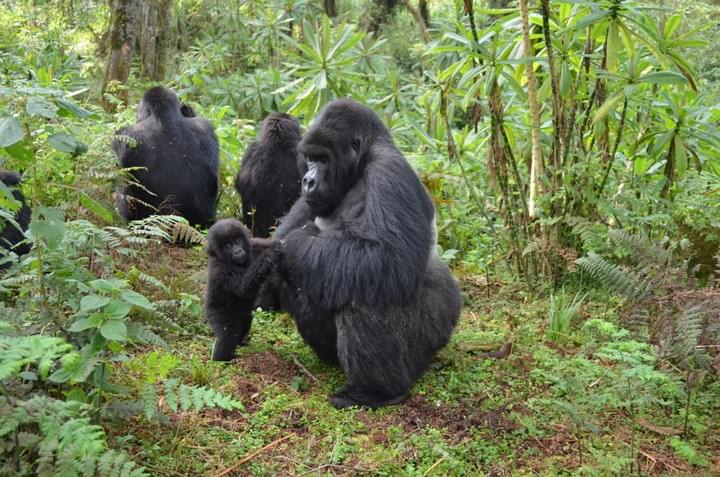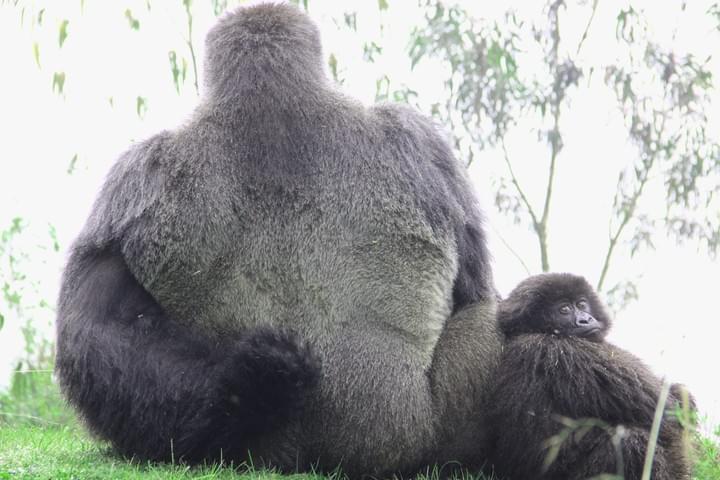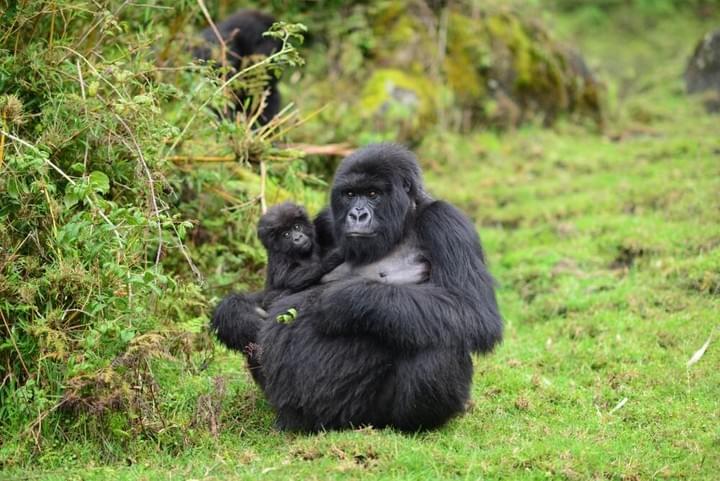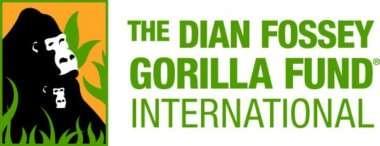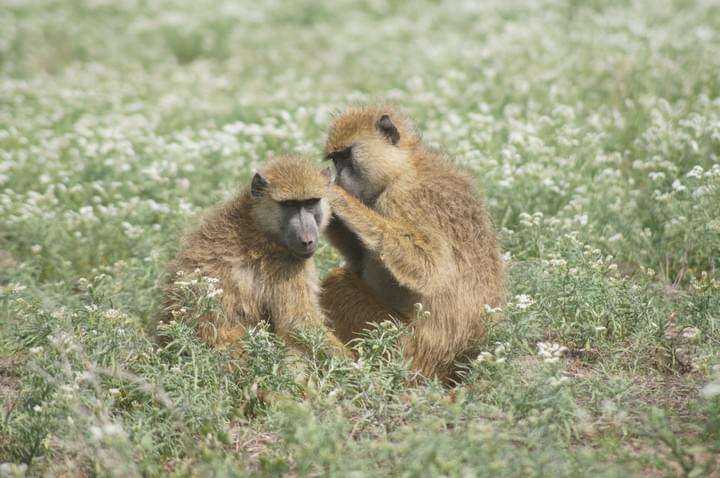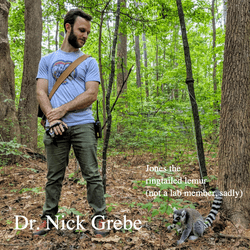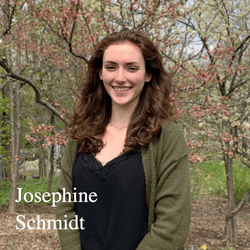
Primate Behavior Lab
Department of Anthropology | University of Michigan
The members of our lab study the evolutionary causes and consequences of the behavior and physiology of primates, including humans. Much of our research focuses on the wild mountain gorilla population monitored by the Dian Fossey Gorilla Fund's Karisoke Research Center in Rwanda.
Research
Behavior
Primate behavior is unusual in many ways. We study how primates interact with one another and with their environment. The goal is to understand how behavior influences their health, reproduction, and longevity, and use this information to make inferences about the evolutionary history of the primate order.
Physiology
Physiological processes such as reproduction, growth, and metabolism provide important information about why primates behave the way they do. We use non-invasive methods to study what happens inside of primates' bodies, and how it relates to their social and environmental landscapes.
Publications
Papers written by our lab members
Hormones & behavior
Grebe NM, Schmidt J, Eckardt W, Umuhoza R, Mayo D, Stoinski TS, Santymire RM, & Rosenbaum S (2024). Examining the dual hormone hypothesis in wild male mountain gorillas. Hormones & Behavior, 164, 105588.
Brown ER, Gettler LT, & Rosenbaum S (2024). Effects of social environments on male primate HPG and HPA axis developmental programming. Developmental Psychobiology, 66(5), e22491.
Gettler LT, Rosenbaum S, Kuo PX, Sarma MS, Bechayda SA, McDade TW, & Kuzawa CW. (2022). Evidence for an adolescent sensitive period to family experiences influencing adult male testosterone production. PNAS, 119 (23) e2202874119.
Grebe NM, Sheikh A, & Drea CM (2022). Integrating the female masculinization and challenge hypotheses: female dominance, male deference, and seasonal hormone fluctuations in adult blue-eyed black lemurs. Hormones & Behavior, 139, 105108.
Rosenbaum S, Eckardt W, Stoinski TS, Umuhoza R, Kuzawa CW, & Santymire RM (2021). Group structure, but not dominance rank, predicts fecal androgen metabolite concentrations of wild male mountain gorillas. American Journal of Primatology, e23295.
Rosenbaum S, Stoinski TS, & Santymire R (2020). Urinary androgens, dominance hierarchies, and social group structure among wild male mountain gorillas. In Chimpanzees in context: a comparative perspective on behavior, cognition, conservation, and welfare (Hopper L & Ross S, eds.). University of Chicago Press, Chicago IL, 137-166.
Eckardt W, Stoinski TS, Rosenbaum S, & Santymire RS (2019). Social and ecological factors alter stress physiology of Virunga mountain gorillas (Gorilla beringei). Ecology and Evolution, 9, 5248-5259.
Rosenbaum S, Gettler LT, McDade T, Augustin S, & Kuzawa CW (2018). Does men’s testosterone ‘rebound’ when dependent children grow up, or when pair bonds end? A test in Cebu, Philippines. American Journal of Human Biology, e23180.
Gettler LT, Kuo P, Rosenbaum S, Avila J, McDade T, & Kuzawa CW (2018). Sociosexuality, testosterone, and life history status: prospective associations and longitudinal changes among men in Cebu, Philippines. Evolution and Human Behavior, DOI: 10.1016/j.evolhumbehav.2018.11.001.
Paternal care
Gettler LT, Rosenbaum S, Bechayda SA, McDade TW, & Kuzawa CW (2024). Men's physical health and life history transitions in the Philippines: Evidence for 'martial selection' but not protective effects of partnering and fatherhood. Social Science & Medicine, 116732.
Rosenbaum S* & Silk JB* (2022). Pathways to paternal care in primates. Evolutionary Anthropology, https://doi.org/10.1002/evan.21942.
Rosenbaum S, Kuzawa CW, McDade TW, Avila J, Bechayda SA, & Gettler LT (2021). Fathers' care in context: 'facultative,' flexible fathers respond to work demands and child age, but not to alloparental help, in Cebu, Philippines. Evolution and Human Behavior, 42(6), 534-546.
Gettler LT, Boyette A, & Rosenbaum S (2020). Broadening perspectives on the evolution of human paternal care and fathers' effects on children. Annual Review of Anthropology, 49, 141-60.
Rosenbaum S, Vigilant L, Kuzawa CW, & Stoinski TS (2018). Caring for infants is associated with increased reproductive success for male mountain gorillas. Scientific Reports, 8:15223.
Rosenbaum S, Hirwa JP, Silk JB, Vigilant L, & Stoinski TS (2016). Infant mortality risk and paternity certainty are associated with postnatal maternal behavior toward adult male mountain gorillas. PLoS One, DOI: 10.1371/journal.pone.0147441.
Rosenbaum S, Hirwa JP, Silk JB, & Stoinski TS (2016). Relationships between adult male and maturing mountain gorillas persist across developmental stages and social upheaval. Ethology, 122, 134-150.
Rosenbaum S, Maldonado-Chapparo AA, & Stoinski TS (2015). Group structure predicts variation in proximity relationships between male-female and male-infant pairs of mountain gorillas. Primates, 57, 17-28.
Rosenbaum S, Hirwa JP, Silk JB, Vigilant L, & Stoinski TS (2015). Male rank, not paternity, predicts male-immature relationships in mountain gorillas. Animal Behaviour, 104, 13-24.
Rosenbaum S, Silk JB, & Stoinski TS (2011). Male-immature relationships in multi-male groups of mountain gorillas. American Journal of Primatology, 71, 1-10.
Alloparental care
Rosenbaum S, Kuzawa CW, McDade TW, Bechayda SA, & Gettler LT (2022). Neither environmental unpredictability nor harshness predict reliance on alloparental care among families in Cebu, Philippines. Development and Psychopathology, 1-12, DOI: 10.1017/S0954579421001711.
Rosenbaum S & Gettler LT (2018). With a little help from her friends (and family) I: the ecology and evolution of non-maternal caretaking in mammals. Physiology & Behavior, 193, 1-11.
Rosenbaum S & Gettler LT (2018). With a little help from her friends (and family) II: the behavior and physiology of non-maternal caretaking in mammals. Physiology & Behavior, 193, 2-24.
Early life effects
Rosenbaum S, Malani A, Lea AJ, Tung J, Alberts SC, & Archie EA (2025). Testing early life effects frameworks: developmental constraints and adaptive response hypotheses do not explain fertility outcomes in wild female baboons. Proceedings of the Royal Society B, 292:20242485.
Gettler LT, Rosenbaum S, Dennis SH, Bechayda SA, & Kuzawa CW (2025). Longitudinal evidence linking childhood energetics, maturation, skeletal muslce mass and adult human male sociosexuality. Royal Society Open Science, 12: 241713.
Rosenbaum S & Kuzawa CW (2023). The promise of great apes as model organisms for understanding the downstream consequences of early life experiences. Neuroscience & Biobehavioral Reviews, 152, 105240.
Morrison RE, Eckardt W, Stoinski TS, & Rosenbaum S (2023). Cumulative early-life adveristy does not predict reduced adult longevity in wild gorillas. Current Biology, 33, 1-8.
Rosenbaum S, Zeng S, Campos FA, Gesquiere LR, Altmann J, Alberts SC, Li F, & Archie EA (2020). Social bonds do not mediate the relationship between early adversity and adult glucocorticoids in wild baboons. PNAS, 117(33), 20052-20062.
Lea A* & Rosenbaum S* (2020). Understanding how early life effects evolve: Progress, gaps, and future directions. Current Opinion in Behavioral Sciences, 36, 29-35.
Methods
Grebe NM, Eckardt W, Stoinski TS, Umuhoza R, Santymire RS, & Rosenbaum S. An empirical comparison of several commercial enzyme immunoassays for the non-invasive assessment of adrenocortical and gonadal function in mountain gorillas. General & Comparative Endocrinology, 342, 114351.
Malani A, Archie EA, & Rosenbaum S (2023). Conceptual and analytical approaches for modelling the developmental origins of inequality. Philosophical Transactions of the Royal Society B, 378: 20220306.
Zeng S, Rosenbaum S, Archie EA, Alberts SC, & Li F (2021). Causal mediation analysis for sparse and irregular longitudinal data. Annals of Applied Statistics, DOI: 10.1214/20-AOAS1427.
Rosenbaum S, Gettler LT, McDade TW, Belarmino NM, & Kuzawa CW (2018). The effects of collection and storage conditions in the field on salivary testosterone, cortisol, and sIgA. Annals of Human Biology, DOI: 10.1080/03014460.2018.1495263.
Eckardt W, Stoinski TS, Rosenbaum S, Umuhoza MR, & Santymire R (2016). Validating faecal glucocorticoid analysis in the Virunga mountain gorilla using a natural biological stressor. Conservation Physiology, 4, cow029.
Conservation
Rivera CJ, Mayo D, & Hull V (2021). Social-ecological interactions influencing primate harvest: insights from Madagascar. Frontiers in Conservation Science, DOI: 10.3389/fcosc.2021.776897.
Knott CD, Kane EE...Brown ER... & Susanto TW (2021). The Gunung Palung Orangutan Project: Twenty-five years at the intersection of research and conservation in a critical landscape in Indonesia. Biological Conservation, 255, 108856.
Etc.
Grebe NM, Hirwa JP, Stoinski TS, Vigilant L, & Rosenbaum S (2022). Mountain gorillas maintain strong affilative biases for maternal sibilings despite high male reproductive skew and extensive exposure to paternal kin. eLife, 11, e80820.
Kuzawa CW, Adair L, Bechayda SA, Borja JRB, Carba DB, Duazo PL, Eisenberg DTA, Georgiev AV, Gettler LT, Lee NR, Quinn EA, Rosenbaum S, Rutherford J, Ryan C, & McDade TW (2020). Evolutionary life history theory as an organizing framework for cohort studies: Insights from the Cebu Longitudinal Health and Nutrition Survey. Annals of Human Biology, 47(2), 94-105.
Rosenbaum S (2018). Offspring defense. In Encyclopedia of Evolutionary Psychological Science (Shackelford TK & Weekes-Shackelford VA, eds.). Springer. DOI: 10.1007/978-3-319-16999-6_1904-1.
Rosenbaum S, Vecellio V, & Stoinski TS (2016). Observations of severe and lethal coalitionary attacks in wild mountain gorillas. Scientific Reports, 6, 37018.
Stoinski TS, Rosenbaum S, Ngaboyamahina T, Vecellio V, Ndagijimana F, & Fawcett K (2009). Patterns of male reproductive behavior in multimale groups of mountain gorillas: examining theories of reproductive skew. Behaviour, 146, 1193-1215.
Stoinski TS, Vecellio V, Ngaboyamahina T, Ndagijimana F, Rosenbaum S, & Fawcett K (2009). Proximate factors influencing dispersal decisions in male mountain gorillas. Animal Behaviour 77, 1155-1164.
*Authors contributed equally
Current projects
Brief overviews of some things we're working on

Social behavior, adaptive responses, and developmental constraints
There is a large body of research on the connections between early life conditions (e.g. environmental factors like resource abundance, but also social factors such as caregiving environments) and later-life outcomes . Are the downstream outcomes adaptive responses that maximize lifetime fitness (e.g. the predictive adaptive response hypothesis), or are they simply the result of constraints imposed by environmental realities during development (e.g. the developmental constraints hypothesis)?
Prior research in this area has focused heavily on epigenetic and physiological mechanisms, and has not yet leveraged the fundamental role that behavior generally, and social behavior specifically, may play. This project is a collaboration with Dr. Beth Archie, and uses data from the Amboseli Baboon Research Project. The baboons’ high environmental variability, male dispersal, and strong female dominance hierarchies make them an ideal system to study how social variables interact with ecological ones, and how the relationship between early life experiences and later outcomes is mediated by social bonds and intraspecific competition.

Reproductive strategies and steroid hormones in non-seasonal breeders
There is an extensive body of literature on the endocrine system switches that occur as seasonally-breeding organisms shift from mating to parenting effort and back again (aka the Challenge Hypothesis). The Challenge Hypothesis is a powerful framework for understanding hormonal mechanisms and reproductive effort in some species, but its predictive power is limited in non-seasonal breeders, and it treats “mating effort” and “parenting effort” as monoliths rather than the complex suite of behaviors each actually represents. In species such as mountain gorillas and humans, non-seasonal breeding is combined with extended offspring development, during which males offer both direct and indirect care. Organisms like these offer ideal opportunities to understand how hormonal mediators work when competing needs must be balanced.
Using longitudinal behavioral and hormonal data from both gorillas and humans, we are exploring how steroid hormones are related to intra- and inter-individual variation in male reproductive strategies, including caretaking. Across the two species, this research addresses hypotheses about (for example) the effect alloparental care has on males’ testosterone profiles, and how testosterone profiles respond to the changes in caretaking behavior that occur as offspring age and become less reliant upon intensive care.

Male development and life history strategies
Male mountain gorillas go through a period of uncertainty after they've become reproductively mature, but have not yet fully developed the secondary sexual characteristics of a fully adult silverback (e.g., large body size, sagittal crest, silver hair on their back). They face critical life history decisions, such as whether to remain in their natal group or disperse, or compete immediately versus wait for later mating opportunities. These decisions may have effects on male development and physiology, including the speed at which they acquire secondary sexual characteristics. We know a phenomenon called "bimaturism," (where males can employ different reproductive strategies by maturing at different times) happens in other primates such as orangutans, but does it happen in gorillas as well? This project is led by graduate student Ella Brown.

High elevation adaptation and climate change
Non-human primates are losing their habitats at a faster rate than ever before, and with the looming threat of climate change, this is unlikely to resolve itself. Primates living in extreme and variable environments will likely be the most negatively impacted. The Virunga mountain gorilla population living in Volcanoes National Park has adapted to live in cold and wet conditions at a high elevation. We are specifically interested in questions such as, how does the Virunga gorilla population behaviorally and physiologically adapt to this extreme environment? how do their environmental conditions and stressors vary across the different microclimates they use? how will this population be affected by climate change? It is unclear if the current adaptations used by Virunga gorillas will be enough to survive the predicted warming climate of this region. Therefore, It is important to measure their physiological and behavioral responses as the climate continues to warm, This project is led by graduate student McKensey Miller.

Female intrasexual competition
Like most social animals, female mountain gorillas compete over limited resources that improve their chances of survival and reproduction. While physical resources like food are certainly
important, social resources such as friends or allies can also offer benefits. Some female gorillas are known to behave aggressively towards other females when near adult males, who can provide infant care, protection, and potentially help with social integration. Social access to adult males may even be an important factor influencing differences in reproductive outcomes among female gorillas, differences feeding competition currently cannot explain. Yet, we know
remarkably little about the prevalence and potential significance of female-female competition over social resources in gorillas and other social animals. This research behavioral, demographic, and physiological data to investigate three main questions: What are female gorillas competing over? What are the costs of their competition? And finally, what are the benefits? This project is led
by graduate student Dominic Mayo.Teaching
Current and upcoming classes at the University of Michigan
Winter 2025 courses
Primate Behavioral Ecology (Anthrbio 478/Psych 469)
Biological Anthropology: An Overview (Anthrbio 570)
Fall 2025 courses
Introduction to Primate Behavior (Anthrbio 368/Psych 338)
Grant Writing for the Life and Social Sciences (Anthrbio 569)
Collaborators
The people and projects we can't work without

Atlanta, Georgia & Musanze, Rwanda
Dr. Tara Stoinski, Dr. Winnie Eckardt, Dr. Shannon McFarlin, Dr. Robin Morrison, Ms. Rose Umuhoza


Northwestern University

University of Notre Dame, Duke University, Max Planck Institute for Evolutionary Anthropology
Science communication
Using photography to study wild primates
Watch graduate student Alex Gategeko explain the many ways that he uses photography to learn more about golden monkey identification and behavior.
Origin stories: The Leakey Foundation podcast
Motherhood episode: Humans invest enormous amounts of time and energy into bringing up our babies. This unique investment is a fundamental part of what it means to be human. In this episode, the first in a three-part series on family relationships, researchers Sarah Blaffer Hrdy, Stacy Rosenbaum, and Amy Scott explore how our species' approach to motherhood may hold the key to some of the most important traits that set us apart from other mammals.
Fatherhood episode: Humans invest enormous amounts of time and energy into bringing up our babies. This unique investment is a fundamental part of what it means to be human. In this episode, the second in a three-part series on family relationships, researchers Lee Gettler, Stacy Rosenbaum, and Sonny Bechayda explore how our species' approach to fatherhood may have shaped some of the most important traits that set us apart from other mammals.
Thriving in the face of adversity: Resilient gorillas reveal clues about overcoming childhood misfortune (Published in The Conversation)
This article is republished from The Conversation under a Creative Commons license. Read the original article.
By Stacy Rosenbaum, University of Michigan and Robin Morrison, University of Exeter
A lot of bad things can happen to young mountain gorillas in the wild. In 1974, an infant mountain gorilla was born in Volcanoes National Park in Rwanda. Researchers named him Titus. As is typical for young gorillas in the wild, Titus spent the first years of his life surrounded by his mother, father and siblings, as well as more distant relatives and unrelated gorillas that made up his social group.
In 1978, however, tragedy struck. Poachers killed Titus’ father and brother. In the chaos that followed, his younger sister was killed by another gorilla, and his mother and older sister fled the group. Juvenile Titus, who was at a developmental stage similar to that of an 8- or 9-year-old human, experienced more tragedy in his first four years of life than many animals do in a lifetime.
In people, a rough start in life is often associated with significant problems later on. Early life adversity can take a wide variety of forms, including malnutrition, war and abuse. People who experience these kinds of traumas, assuming they survive the initial event, are more likely to suffer health problems and social dysfunction in adulthood and to have shorter life spans. Often, these outcomes trace back at least in part to what public health researchers call health risk behaviors – things like smoking, poor eating habits and a sedentary lifestyle.
But researchers have documented the same kinds of problems in adulthood in nonhuman animals that experienced early life adversity. For example, female baboons who have the hardest childhoods have life spans that are on average only half as long as their peers that have the easiest. Activities like smoking and unhealthy food choices can’t be the whole story, then, since animals don’t engage in typical human health risk behaviors.
Given the connection between adverse events while young and poor health later in life, one might expect that Titus’ unlucky early years would predict a short, unhealthy adulthood for him. However, there are interesting hints that things might work differently in mountain gorillas, which are one of humans’ closest living relatives.
Decades of gorilla observations
As scientists who have spent many years studying wild gorillas, we have observed a wide variety of early life experiences and an equally wide variety of adult health outcomes in these great apes. Unlike other primates, mountain gorillas don’t appear to suffer any long-term negative effects of losing their mothers at an early age, provided that they reach the age at which they are old enough to have finished nursing.
Losing your mother is only one of many bad things that can happen to a young gorilla, though. We wanted to investigate whether a pattern of resilience was more generalized. If so, could we gather any insight into the fundamental question of how early life experiences can have long-lasting effects? To do this, we needed exceptionally detailed long-term data on wild gorillas across their lifetimes. This is no mean feat, given gorillas’ long life spans. Primatologists know that males can survive into their late 30s and females into their mid-40s.
The best data in the world to conduct such a study comes from the Dian Fossey Gorilla Fund, which has been following individual mountain gorillas in Rwanda almost daily for 55 years. We conducted doctoral and postdoctoral research with the Fossey Fund and have collaborated with other scientists there for more than 20 years. From their database, which stretches back to 1967, we extracted information on more than 250 gorillas tracked from the day they were born to the day they died or left the study area. We used this data to identify six adverse events that gorillas younger than age 6 can endure: maternal loss, paternal loss, extreme violence, social isolation, social instability and sibling competition. These experiences are the gorilla equivalent of some kinds of adversity that are linked with long-term negative effects in humans and other animals.
Many young gorillas didn’t survive these challenges. This is a strong indication that these experiences were indeed adverse from the perspective of a gorilla. We were surprised to discover, however, that most of the repercussions of these hardships were confined to early life: animals that survived past the age of 6 did not have the shorter life spans commonly associated with early life adversity in other species. In fact, gorillas that experienced three or more forms of adversity actually had better survival outcomes, with a 70% reduction in the risk of death across their adult years. Part of this hardiness, especially for males, may be due to a phenomenon called viability selection: Only the strongest animals survive early adversity, and thus they are also the animals with the longest life spans. While viability selection may be part of the story, the patterns in our data strongly suggest that as a species, mountain gorillas are also remarkably resilient to early adversity.
Where do gorillas get their resilience?
Although our findings corroborate previous research on maternal loss in gorillas, they contrast with other studies on early adversity in humans and other long-lived mammals. Our study indicates that the negative later-life consequences of early adversity are not universal. The absence of this connection in one of our closest relatives suggests there might be protective mechanisms that help build resiliency to early-life knocks. Gorillas may provide valuable clues to understand how early life experiences have such far-reaching effects and how people can potentially overcome them.
While there is still much left to explore, we suspect that gorillas’ food-rich habitat and cohesive social groups could underpin their resiliency. When young gorillas lose their mothers, other social group members fill in the companionship hole she leaves behind. Something similar may happen for other types of early adversity as well. A supportive social network combined with plentiful food may help a young gorilla push through challenges. This possibility underscores the importance of ensuring that human children who experience early adversity are supported in multiple ways: socially, but also economically, especially since early adversity is particularly prevalent among children living in poverty – itself a form of adversity.
And what became of Titus? Despite his difficult start in life, Titus went on to lead his group for two decades, siring at least 13 offspring and surviving to his 35th birthday, making him one of the most successful gorillas the Dian Fossey Gorilla Fund has ever studied. Though Titus’ story is only a single anecdote, it turns out that his resilience is not so unusual for a member of his species.
Other general interest writing
Psychology Today (co-authored with Dr. Nathan Lents, CUNY)
Selected press coverage
The Planetary Laboratory
Current K-12 science teaching practices often limit kids' science exposure to out-of-date materials with little obvious relevance to the world children see around them. The Planetary Laboratory team is working to transport science from field sites, laboratories, and universities, into the classroom. Our NSF-supported project is helping teachers and kids learn how scientists solve problems, and helping scientists reach--and learn from--teachers and kids.
Opportunities
Current openings in the lab
Prospective graduate students
Information about the department and the graduate school application process at the University of Michigan can be found here, but please contact Professor Rosenbaum directly if you are a highly qualified candidate who plans to apply. Feel free to use the contact form at the bottom of this website, or send an email. Priority will be given to students with prior field and laboratory experience, and who have a strong interest in theory-driven questions.
Research opportunities for undergraduates
Are you an undergraduate who is interested in getting involved in biological anthropology research at the University of Michigan? See here for more information about what the faculty in our subfield do, and please fill out this form to indicate interest in one or more of our labs. While we do not always have opportunities available, if there is a position we feel is a match for your interests, we will be in touch.
Contact
Stacy Rosenbaum © 2017
